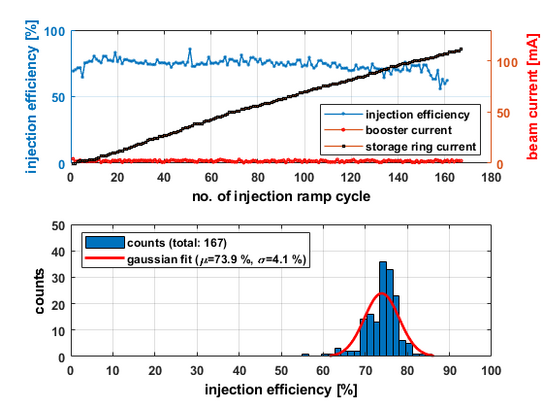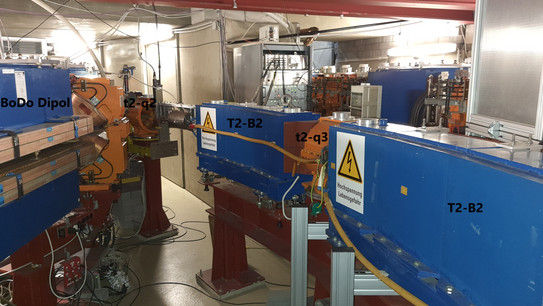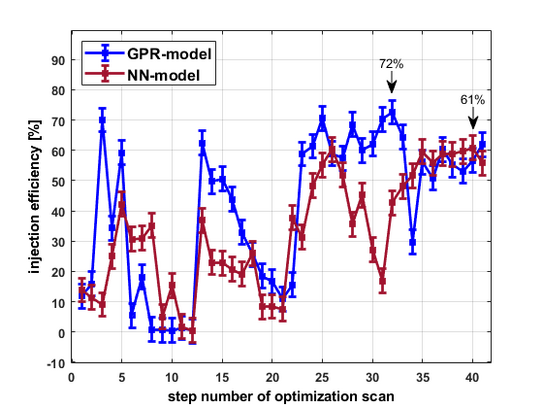Optimization of the injection
At the DELTA storage ring facility, all magnets as well as the Radio Frequency (RF) system of the Booster Synchrotron (BoDo) are software-controlled to cyclically ramp up and down. Each of these energy ramp cycles takes about 7 seconds, whereby the electron energy is increased from 90 MeV to 1.5 GeV. Depending on the electron transfer rate (injection efficiency) and the stored beam current in BoDo, 150 to 200 ramp cycles are needed to reach the maximum beam current of 130 mA in the storage ring (see image on the right). To minimize injection times, optimizing the injection efficiency from the Booster Synchrotron to the storage ring is crucial.
During the injection process, a multitude of parameters (e.g., strengths of transfer channel magnets, trigger timings of all pulsed injection and extraction magnets) need to be manually adjusted. The efficiency of injection primarily depends on the settings of the Booster extraction elements, the magnets in the transfer line (T2), and the injection components in the storage ring. To automate the injection procedure and enhance electron transfer rates, innovative machine learning concepts have been tested.
In the course of several studies ([12], [13]), initially 13 and later up to 18 injection parameters were systematically and randomly altered, and the impact on injection efficiency was measured. These measurements served as training data for supervised learning of injection prediction models. In addition to neural networks (NN), decision trees (DT) and Gaussian Process Regressors (GPR) were employed as prediction models. Heuristic (e.g. simulated annealing) and statistical (e.g. Bayesian optimization) optimization algorithms utilized these ML-based surrogate models to improve injection settings between injection cycles (approximately 7 seconds). This process led to significant improvements in injection efficiency within a few iterations (injection cycles) for GPR- and NN-based models. Decision trees proved to be less successful. Further details are presented in studies [12], [13] and summarized in the IPAC-23 conference paper.


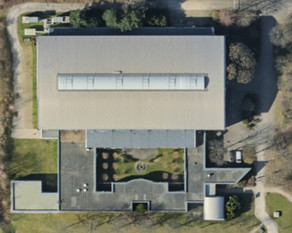
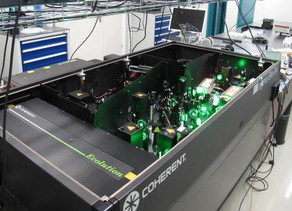
![[Translate to English:] [Translate to English:]](/storages/delta/_processed_/1/2/csm_studium_seitenheader_1e3d243ce2.jpg)
